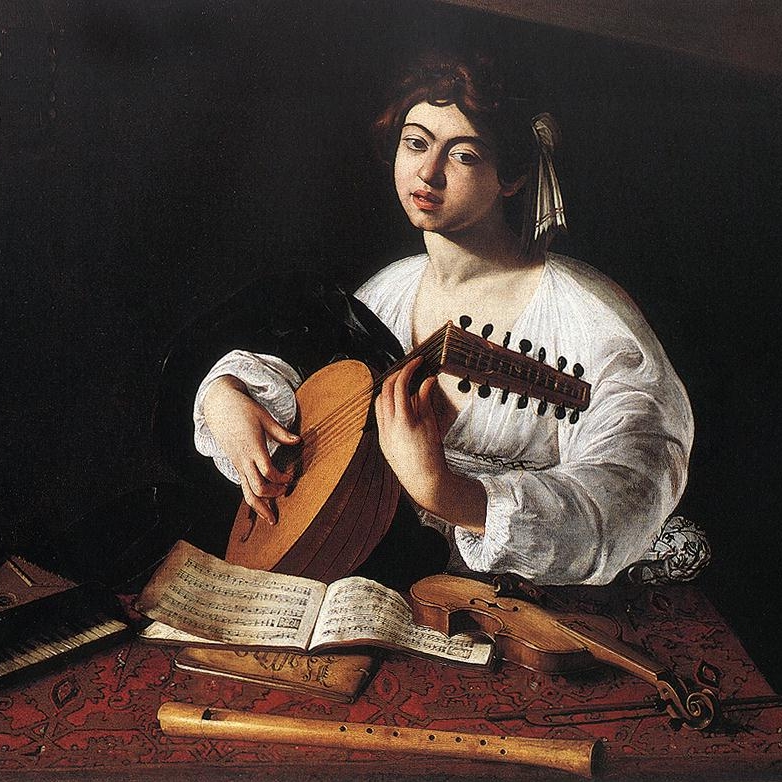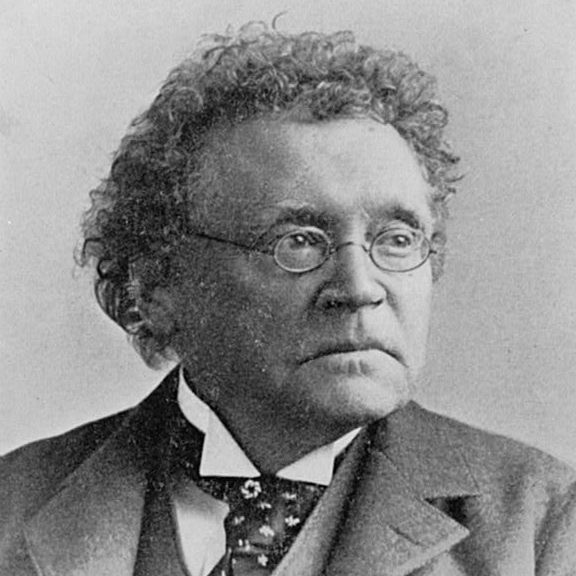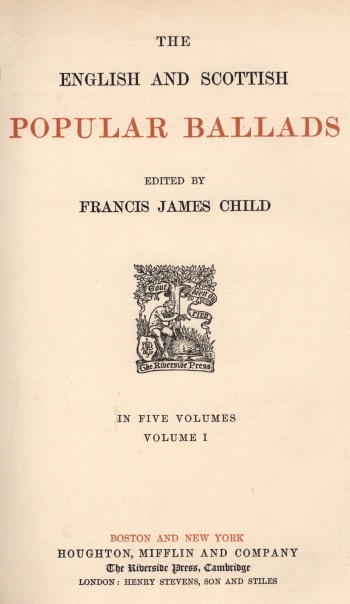Three historical events of 1281, 1290 and 1589 may have inspired this ballad, but scholars have not reached agreement regarding from which it actually stems. About the only thing the scholars do agree upon, is that the original manuscript was transmitted from Scotland.
The King of Scotland, in residence at Dunfermline, wonders aloud where he can find a sailor worthy of sailing his ship. An elderly knight speaks up and suggests Sir Patrick Spence. Patrick receives a letter from the King and wonders who has done him the ill deed of recommending him to sail at this time of year. He knows the voyage will be dangerous, but summons his crew to do the King's bidding. One of the crew makes mentions of a bad omen – he's seen the full moon in the arms of the new moon. Against their instincts, Patrick and crew set sail, fall prey to a storm, and never return to port.
On September 11, 1297 the armies of Edward I of England and the combined forces of the Scottish rebels William Wallace and Andrew Murray clashed at what has become to be known as the Battle of Stirling Bridge. Hiding the bulk of their forces in the hills bordering the Firth of Forth, Wallace and Murray waited until the English army started to cross the narrow bridge before attacking. With no way to turn back, the English army, led by the Earl of Surrey, was at the mercy of the Scots. The Scots had no mercy to offer.
Two noblemen of opposite sides of the border region between England and Scotland – Percy of England and Douglas of Scotland – square off in this lengthy ballad which takes place in the Cheviot Hills. In a departure from classic tales of border warfare, which usually involve cattle rustling, this ballad begins with a dispute about deer hunting, and evolves into an alternate version of The Battle of Otterburn, which occurred in 1388 – see synopsis below.
The battle of Harlaw was fought on July 24, 1411. Donald of the Isles, to maintain his claim to the Earldom of Ross, invaded the country south of the mountains with ten thousand islanders and men of Ross in the hope of sacking Aberdeen, and reducing to his power the country as far as the Tay. He was met at Harlaw, eighteen miles northwest of Aberdeen, by Alexander Stewart, the Earl of Mar and Alexander Ogilby, Sheriff of Angus, with the forces of Mar, Garioch, Angus. The Highlanders lost more than nine hundred men, the Lowlanders five hundred, including nearly all the gentry of Buchan. The story is told by a Highlander, and begins with his meeting with Sir James the Rose and Sir John the Gryme (Graham), who ask for information about Macdonell (Donald of the Isles).
The battle of Otterburn was fought on August 19, 1388 and was prefaced by an invasion and several skirmishes. A feud between the great families Percy and Neville, of northern England, was a fortuitous split of which the Scots could not resist taking advantage. Assembling their armies, which amounted to twelve hundred cavalry and forty thousand foot soldiers, the Scottish barons and knights mustered near the border at Jedburgh.
The English barons and knights, having received word back from heralds and minstrels they had sent north, made preparation for the invasion, but remained quietly in their houses, waiting until they learned that the Scots were making their move. They decided to make a simultaneous counter raid.
The Scots learned of this plan from an English spy they captured. They divided their army sending the main body west to Carlisle, under command of Douglas, Earl of Fife, son of the king, while a detachment of three or four hundred men at arms, supported by two thousand soldiers, partly archers, commanded by James, Earl of Douglas, the Earls of March and Murray, struck out for Newcastle with the intention of crossing the river and burning and ravaging Durham.
The burning and pillaging had begun in Durham before the Earl of Northumberland (Percy) knew of their arrival. He split his armies, sending a contingency led by his sons Henry and Ralph to Newcastle, while he remained at Alnwick, hoping to enclose the Scots when they returned north. The Scots did turn north, with a large booty relieved from Durham, recrossed the Tyne and stopped at Newcastle.
There was skirmishing for two days outside the city and in the course of a long combat between Douglas and Henry Percy, the Scot got possession of the Englishman's pennon. He told Percy he would raise it on the highest point of his castle at Dalkeith. Percy responded that not only would Douglas never accomplish that self-glorifying boast, nor would he manage to carry the pennon out of Northumberland.
Thus the stage was set for the battle at Otterburn, thirty miles northwest from Newcastle, where there was a castle or tower set in marshy ground. Percy, greatly mortified at the loss of his pennon, presented his case and the affront to his honor to the knights and squires of Northumberland. Convinced that Douglas was backed by the whole power of Scotland, they replied that it was better to lose a pennon than it was to expose the country to further risk. Later, scouts arrived with information that Douglas was encamped at Otterburn, but that the main army had departed for Carlisle to join with their countrymen there. In reality, they had made themselves huts in the trees and driven their cattle into the bogs.
In the end, the losses of the English were put at 1,040 prisoners, 1,860 killed and more than 1,000 wounded. Those of the Scots were about 100 killed, including the Douglas himself, and 200 captured. Douglas was interred at Melrose Abbey. A tomb of stone was built over his body, and above this was raised the Earl of Northumberland's pennon.

Ballads were particularly characteristic of the popular poetry and song of the British Isles from the later medieval period until the 19th century. ... Read more at Wikipedia.

Francis James Child (1825-1896) was an American scholar, educator, and folklorist, best known today for his collection of English and Scottish ballads now known as the Child Ballads. ... Read more at Wikipedia.

The Child Ballads are 305 traditional ballads from England and Scotland, and their American variants, anthologized by Francis James Child during the second half of the 19th century. ... Read more at Wikipedia.